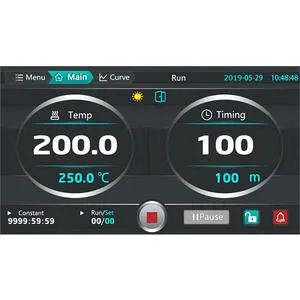Temperature controller is an indispensable automatic control instrument in modern chemical production process. Its main function is to regulate and maintain the stable operation of materials within a specific temperature range by monitoring the temperature changes of materials in the system. The working principle of this temperature controller can be explained by the following three aspects:

Sense temperature changes: The temperature controller can accurately sense temperature changes in the environment by using sensor technologies such as thermocouples, thermistors, and infrared. When the electrical signal of the temperature sensor is sensed, it will be immediately transmitted to the central processor of the controller.
Processing signal information: The central processor collects and analyzes the signal information transmitted by these sensors, and converts the analyzed results into electrical signals that can be recognized by the machine. At the same time, the temperature controller is also equipped with a special relay, which can control the actions and movements of servo mechanisms and other electromechanical equipment.
Feedback control: If the temperature exceeds a certain range, the central processor will transmit the corresponding control signal to the servo mechanism or corresponding electromechanical equipment. This process is also called feedback control, which can make the temperature in the environment reach a specific artificially set temperature value and maintain stability when it reaches this value.
Therefore, the working principle of the temperature controller combines sensor technology, signal processing technology and servo mechanism to achieve computer automatic control, which can meet different manufacturing needs, ensure that materials are in a certain stable state during the production process, improve production efficiency, and reduce Cost of production.